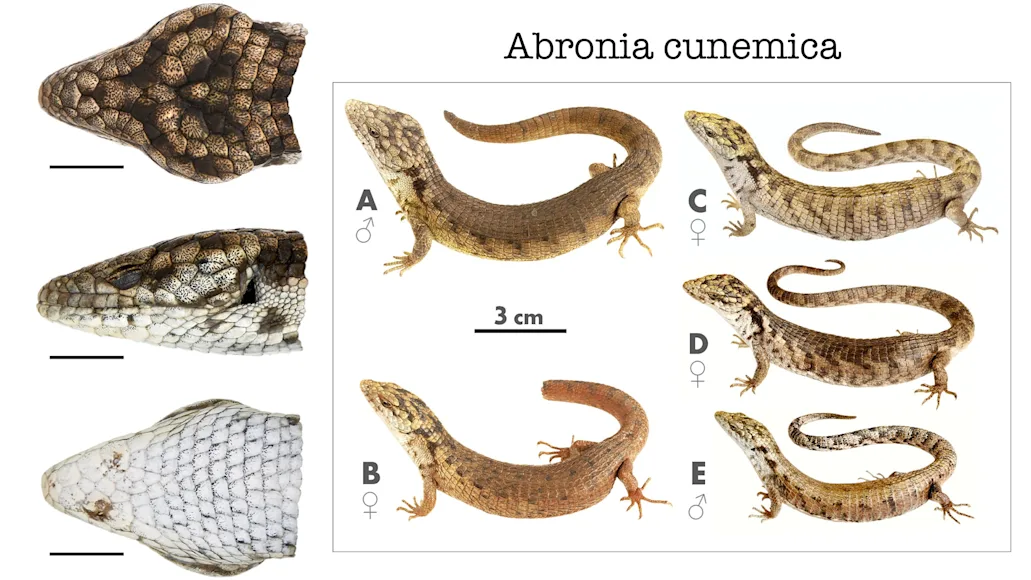After years of scouring the forest floor and climbing trees to search the dense canopy of the Northern Highlands of Chiapas, Mexico, scientists have finally found what they were looking for: an “unusually large” new species of arboreal alligator lizard, newly dubbed Abronia cunemica, or the Coapilla arboreal alligator lizard.
According to a study published on January 3rd in the scientific journal PLOS One
, “intriguing photographs” of an arboreal alligator lizard emerged from the heavily forested area of southern Mexico in 2014, and researchers then conducted a total of five collecting expeditions from 2015 to 2022, involving “extraordinary difficulty” and a total of over 350 person-hours. Their efforts paid off. “During our multi-year fieldwork…we captured five specimens of the presumed new species of arboreal Abronia,” the study reads
. “All specimens originated from near the town of Coapilla. We searched for specimens on foot and by climbing trees, and we captured them by hand or by a lasso attached to a telescoping pole.”
After further study and testing—all of which is described in great detail in the study—scientists concluded that their specimens were indeed a species previously unknown to science. At nearly 10 inches long, Abronia cunemica is “unusually large,” as arboreal alligator lizards go. The creatures are yellowish-brown on top with pale bellies and distinct dark-brown flank blotches; their scale pattern, which is said to be alligator-like, also differs from that of other such lizards.
One interesting aspect of arboreal-alligator-lizard life is the courtship bite, which researchers got to witness first hand: We…found a pair in a courtship bite-hold on the forest floor, after they presumably fell from an…tree,” reads the study. “Although the male immediately released his bite hold on the female upon capture, a few hours later…he re-initiated a more persistent bite hold on her head and neck. After being manually separated…the male responded with repeated bouts of subtle yet intense tail tremors lasting several seconds.” Two of the female specimens found were also thought to pregnant, all pointing towoard healthy natural reproduction.
According to the study, the species name cunemica comes from Cuñemo, which is the indigenous Zoque-language name for Coapilla, the southern Mexico town closest to where the lizards were found.


